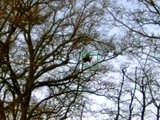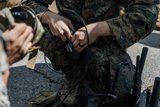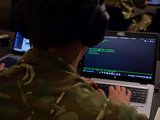LandWarNet 2011: US Army calls for more realistic NIE
The US Army's Network Integration Evaluation (NIE) lacks sufficient realism in relation to ongoing operations in Afghanistan, senior service officials have admitted.
The bi-annual exercise which takes place at Fort Bliss and White Sands Missile Range, New Mexico, is designed to recreate the tactical network and includes operational tests of Programmes of Record and emerging technologies.
The next test for NIE 12.1 is scheduled to take place in October and will include the integration of full motion video (FMV), aerostats and surveillance towers.
However, speaking at the LandWarNet conference in Tampa, Maj Ryan Lueders, Program Executive Officer for Intelligence, Electronic Warfare and Sensors, conceded that despite the introduction of more and more sensors and platforms, there was still a requirement for a 'more robust scenario and OPFOR [opposing force]'.
Describing the test exercise as being 'similar' to the Afghanistan theatre, the army's Deputy Program Executive Officer for Integration Col John Wendel, also stressed how NIE required 'better access to COTS [commercial off-the-shelf] equipment so that we can spin it and get it out to the field as soon as possible'.
Referring to lessons learned in previous tests, Leuders said platforms such as the Persistent Threat Detection Systems would not be included in the October programme but suggested that Persistent Ground Surveillance Systems could be brought in. 'How do we test without pieces of infrastructure,' he asked while stating that the programme had yet to reflect all the equipment requested by troops in training.
'There are too many systems under evaluation and networks with no collective training or TTPs [tactics, techniques and procedures] for collective employment and we're really not sure how new technology is going to change the battlefield,' Leuders continued.
Army officials added that the NIE process still required increased planning, execution and network management; less time spent grooming system to ensure they meet performance objectives; and more quantity of products capable of supporting testing. and earlier 'lock-down' of systems under evaluation which was described as a 'key decision' in the development of the network architecture. The process was also criticised for 'slipping' key milestones.
More from Digital Battlespace
-
![Chess Dynamics successfully demonstrates Vision4ce AI-driven tracker]()
Chess Dynamics successfully demonstrates Vision4ce AI-driven tracker
The Vision4ce Deep Embedded Feature Tracking (DEFT) technology software is designed to process video and images by blending traditional computer vision with artificial intelligence (AI) algorithms to present actionable information from complex environments.
-
![Wave Relay devices cleared for security use on commercial systems in industry trend]()
Wave Relay devices cleared for security use on commercial systems in industry trend
Persistent Systems has been cleared by National Security Agency (NSA) to transmit sensitive data on commercial networks. The devices are added to the NSA’s Commercial Solutions for Classified (CSfC) component list which also includes other companies’ products providing the same security.
-
![UK teases cyber spending boost in Strategic Defence Review ahead of “imminent” release]()
UK teases cyber spending boost in Strategic Defence Review ahead of “imminent” release
The release of the UK’s Strategic Defence Review (SDR) has been long promised as mid-year. It is possible it could be as early as 2 June although the UK Ministry of Defence (MoD) continues to play its cards close to its chest.
-
![Intelsat emphasises SATCOM resilience for SOF in contested domains (video)]()
Intelsat emphasises SATCOM resilience for SOF in contested domains (video)
Intelsat outlines how its multi-orbit SATCOM architecture is enhancing connectivity and resilience for special operations forces operating in degraded and contested environments.
-
![US Space Force’s next-generation missile warning system moves forward with $500 million in new contracts]()
US Space Force’s next-generation missile warning system moves forward with $500 million in new contracts
Next-Generation Overhead Persistent Infrared (Next-Gen OPIR) satellites are intended to provide early warning of missile launches from any location worldwide and new ground stations will result in expanded coverage of critical missile warning.























